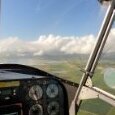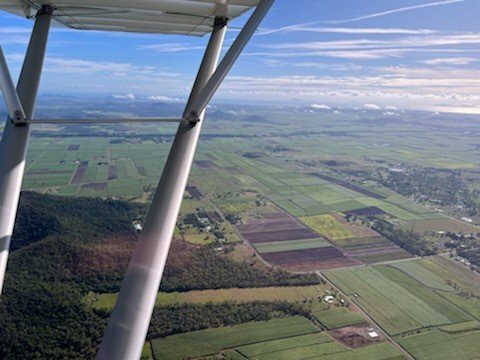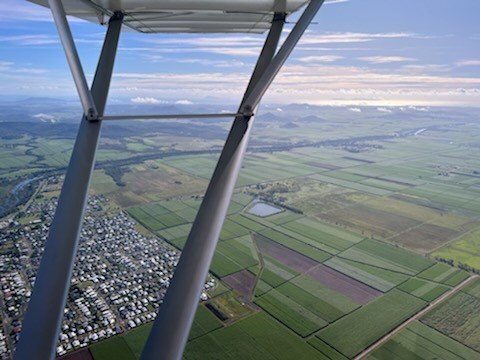-
Posts
3,031 -
Joined
-
Last visited
-
Days Won
44
Content Type
Profiles
Forums
Gallery
Downloads
Blogs
Events
Store
Aircraft
Resources
Tutorials
Articles
Classifieds
Movies
Books
Community Map
Quizzes
Everything posted by Blueadventures
-
This is a video I did a few years back will give an idea of what it's like. I did a coolant hose on way home had to precautionary outland and some guys from Old Station came and helped out with hose joiner and coolant. I tried twice to put money in their tool bucket but they gave it back. Great guys. This year is the next one and I'll be phoning them to at least buy them some beers. Its a great turn out and worth the journey to get there. Hope the video helps with decisions to attend.
-

Birdsville Races - Dead and gone.
Blueadventures replied to walrus's topic in AUS/NZ General Discussion
Hi Paul This is a video I did a few years back will give you an idea of what it's like. I did a coolant hose on way home had to outland and some guys from Old Station came and helped out with hose joiner and coolant. I tried twice to put money in their tool bucket but they gave it back. Great guys. This year is the next one and I'll be phoning them to at least buy them some beers. Its a great turn out and worth the journey to get there. Hope the video helps your decision. -

Birdsville Races - Dead and gone.
Blueadventures replied to walrus's topic in AUS/NZ General Discussion
Worth attending you won't be disappointed. -
Correct Red, I had been looking on and off for a suitable editing programme since GoPro Studio was discontinued plus it was a bit difficult to use. Was at a mates place yesterday and asked him what he was using. I downloaded the trial version and found it an easy to use editor. Will try a couple of holiday videos tonight to splice into one. Haven't bought the full version yet and thought it may be helpful to others wanting to edit videos and add comments etc.
-
A flight with the Nynja that had fog forming over the land to meet the low cloud due to the moist sea air meeting with the cooler land air. Was ok being right on the coast line but not nice if over land and no visible suitable landing areas. Its a bit longer than I wanted but also wanted to show the different sky. First use of the editing programme and it was easy to use. Hope you enjoy.
-
Images of E-prop flight on 20 April 2022 also my rat catching hangar snake rest on the door panel. Image of 4,600rpm and 87 kts and 5,250 rpm and ASI on its way to 108 kts (reading lower due to when image taken.
-
A flight that had fog forming over the land to meet the low cloud due to the moist sea air meeting with the cooler land air. Was ok being right on the coast line but not nice if over land and no visible suitable landing areas. Its a bit longer than I wanted but also wanted to show the different sky. First use of the editing programme and it was easy to use. Hope you enjoy.
-

Birdsville Races - Dead and gone.
Blueadventures replied to walrus's topic in AUS/NZ General Discussion
Take a good -10 sleeping bag as it gets cold. (Queensland cold for Queenslanders, I know it’s colder down south) -
Hi Thruster88 They are a nice bird to fly and I enjoy it and can handle it well. (I was crap at landing my previous Skyfox taildragger and have no issues in Drifters.) Back to speed; I pretty much work off IAS and GS on the ipad and usually fly under 4,500 and never really been over 7,500. (Been higher in my Blanik L131-A glider in the past.) I'll work the approximate TAS calculations as never doing trips longer than 4 hours legs (not far at a 90 plus cruise speed). A memory aide is plus 3 kts every 1,000 feet I'm at above 3,000 ft. (Bit like the gliding rough rule for temperature drop per 1,000 ft.) At the end if the day an happy doing between 0.135 and 0.170 MACH:) WE have crap weather up here set in until end of next week at least. So will get to the hangar and decrease the pitch, adjust the rudder trim bungee and do a new w&b (although not much difference in weight of the DUC but good for loading the next trip away. Cheers
-
Images of E-prop flight on 20 April 2022 also my rat catching hangar snake resting on the door panel. Image of 4,600rpm and 87 kts and 5,250 rpm and ASI on its way to 108 kts (reading lower due to when image taken. Needed to adjust rudder bungee as I needed to input right rudder a bit, slip ball to right a little.
-
Mark having done two flights yesterday, total 60 minutes I am rapt in the E-prop and its performance yesterday exceeded my expectations and that is at 5,250 rpm WOT S&L so when pitch altered to deliver 5,500 rpm I will be further impressed. Happy to have my information added to your testimonials for E-prop performance as a satisfied customer. Cheers.
-
Yesterday I saw a mate had two coolant hose for his Bristelle. He said he purchased from the company. If you want his contact pm me and I'll send to you so you can ask him about the hoses and may be get an image of his setup. Cheers
-

What kit aircraft have you built?
Blueadventures replied to CAV0K's topic in AUS/NZ General Discussion
I build a Skyranger Nynja; thoroughly enjoyed the build and flying. Great agent support and build log info by others who built them. Now have 304 hours. Kits now at 600kG and with 912 100hp and Eprop looking at a max speed 113kts. -
For information the main development of the E-prop can be attributed to drone requirements in the area of 'Extended Speed Range' ERS design. Extract from manufacture of the drone. Propeller For the R^2 UAV, a specific propeller was designed by Hélices E-Props (French carbon propeller manufacturer) to maximize the overall performances of the engine at the various required UAV air speeds. The propeller designed for the R^2 UAV belongs to the 3rd generation of propellers. Due to mechanical performances of the carbon fiber, new aerodynamic designs have become possible: high CL profiles, narrow chords, big diameters, special positions of the blades… Those type of propellers present a strong ESR effect (Extended Speed Range effect). The term ESR effect is used to define a fixed pitch propeller (or ground adjustable pitch one) which behavior is near from the behavior of a variable pitch propeller. This ESR effect has the following characteristics: it causes very small gap between the static RPM and the flight RPM, this allows to keep a strong power at take-off. It seems that the max throttle RPM stays nearly constant. The ESR effect can improve the performances at take-off, because then the engine is running very near of its max RPM, and provides all its power during take-off. Thanks to their geometries and their profiles, the E-Props propellers as the one developed for the innovative UAV R^2 have a very strong ESR effect, which allows to improve the performances of the aircraft at take-off and in cruise, in comparison with a standard fixed pitch propeller. Due to the assisted launch and recovery options, the maximum propeller diameter was a design driver as well as the necessity of having a folding propeller. Seven innovations can be found on the propeller designed for the R^2 UAV, compared with a standard propeller. The obtained performances are exceptional. The combination of these state of the art airframe, engine and propeller results in a unique and optimal airborne platform for UAV applications.
-
For information the main development of the E-prop can be attributed to drone requirements in the area of 'Extended Speed Range' ERS design. Extract from manufacture of the drone. Propeller For the R^2 UAV, a specific propeller was designed by Hélices E-Props (French carbon propeller manufacturer) to maximize the overall performances of the engine at the various required UAV air speeds. The propeller designed for the R^2 UAV belongs to the 3rd generation of propellers. Due to mechanical performances of the carbon fiber, new aerodynamic designs have become possible: high CL profiles, narrow chords, big diameters, special positions of the blades… Those type of propellers present a strong ESR effect (Extended Speed Range effect). The term ESR effect is used to define a fixed pitch propeller (or ground adjustable pitch one) which behavior is near from the behavior of a variable pitch propeller. This ESR effect has the following characteristics: it causes very small gap between the static RPM and the flight RPM, this allows to keep a strong power at take-off. It seems that the max throttle RPM stays nearly constant. The ESR effect can improve the performances at take-off, because then the engine is running very near of its max RPM, and provides all its power during take-off. Thanks to their geometries and their profiles, the E-Props propellers as the one developed for the innovative UAV R^2 have a very strong ESR effect, which allows to improve the performances of the aircraft at take-off and in cruise, in comparison with a standard fixed pitch propeller. Due to the assisted launch and recovery options, the maximum propeller diameter was a design driver as well as the necessity of having a folding propeller. Seven innovations can be found on the propeller designed for the R^2 UAV, compared with a standard propeller. The obtained performances are exceptional. The combination of these state of the art airframe, engine and propeller results in a unique and optimal airborne platform for UAV applications.
-

E-Props ...who has first hand experience with these
Blueadventures replied to eightyknots's topic in Engines and Props
Fitted in an hour flight in the Nynja this morning. My findings were that I'm very happy with the E-Prop propeller. It was set with the three blades at 24.9, 25 and 25.1 degrees; being within the 0.3* I decided to leave as is and fly to evaluate. Ground static rpm was 5,400. First flight climb 1,400 f/m (better than DUC never much over 1,000 one up) Noticed had to put in right rudder (was perfect with DUC and the rudder input was more than acceptable) also during taxi to take off point noticed low rpm was a faster travel speed, also runway is bitumen sealed. 4,500 rpm 85 kts; 5,250 gave 108kts (quickest with DUC was 105 kts at 5,500 rpm). Landed and moved rudder bungee 6mm to port. Take off climb 5,250rpm and 1,250 ft/m OAT 24*C. Only slight need of right rudder (certainly acceptable) so will move rudder bungee another 2mm to port. Will before next flight re-pitch for 5,500rpm static. There is wild weather coming so will be a week or so before flight. -
Did fit in an hour flight in the Nynja this morning. My findings were that I'm very happy with the E-Prop propeller. It was set with the three blades at 24.9, 25 and 25.1 degrees; being within the 0.3* I decided to leave as is and fly to evaluate. Ground static rpm was 5,400. First flight climb 1,400 f/m (better than DUC never much over 1,000 one up) Noticed had to put in right rudder (was perfect with DUC and the rudder input was more than acceptable) also during taxi to take off point noticed low rpm was a faster travel speed, also runway is bitumen sealed. 4,500 rpm 85 kts; 5,250 gave 108kts (quickest with DUC was 105 kts at 5,500 rpm). Landed and moved rudder bungee 6mm to port. Take off climb 5,250rpm and 1,250 ft/m OAT 24*C. Only slight need of right rudder (certainly acceptable) so will move rudder bungee another 2mm to port. Will before next flight re-pitch for 5,500rpm static. There is wild weather coming so will be a week or so before flight.
-

E-Props ...who has first hand experience with these
Blueadventures replied to eightyknots's topic in Engines and Props
Hi Mark Pitch at 24.9, 25.0 & 25.1 (with 0.1 between the three) and 5400 WOT tied down on ground. The rain came so no flight. May have to wait a week at least now; bugger. Not much difference between DUC and the E-prop but I'll do a new w&b anyway in the next week. I'll keep you posted on results. Hearing the Nynja factory testing in UK is seeing 113 kts (best to date is 105 kts) the performance looks like being better than expected. -
Yes, Flylight Airsports in UK bought the company a few years back when Phillipe's family sold it after his death. They were already building them and not have factory build certification. They are now awaiting the final sign off for the 600kG variant. They have a webb site. Very good to deal with. Only small crew so personal service with slight delays when busy. Never had a problem with their service.
-
Hi Mark FYI Paul at Flylight just sent me this info from his testing on a Nynja;- "I have been testing one, we have put in for French approval for it and working towards U.K. approval - I will be interested in how you find it. It has a strong ‘constant speed effect’ - it’s a bit like an automatic gearbox - allowing high RPM at low speed in the climb without high cruise RPM. It achieves that at the expense of some blade efficiency at the lower speeds ( it’s a kind of aerodynamic slipping clutch thing) but the idea is that it allows the engine to release more power and give a net gain. A prop without this effect might be more climb efficient if set to fine pitch, but would then be revving too high for the cruise. The answer of course is an inflight variable pitch / constant speed prop, but they are very expensive, complex and normally heavy too. It’s a very smooth prop, which is nice, and doesn’t have any annoying harmonics ( unlike some others we have tried that claim similar effects), and is super light which means lower rotational intertia and a nice soft stop. But re do your weight and balance after changing - it might throw you out if the aft limit if a parachute is also fitted! I have mine (912ULS) set so it pulls around 5300 in the climb at 75mph. An interesting effect is that if you pull the nose up and slow down to 60mph the ‘clutch slips’ and it revs up to 5400 or more - but you can feel vibration then from the stalled blade flow. At 75 it’s super smooth. If I leave it at wide open throttle and put the nose down to level off, the RPM stays at 5300 all the way up to 115mph or so and only after that starts to rise hitting just under 5500 at 130mph. Cruise around 4000 RPM for 85 - 100mph at around 4400. Kievprop takes a lot of beating for a very economical good performing prop. ( and we really hope they can survive the war and continue) This slots in at a higher spend level but with some interesting features and enhancements that unlock some advantages."
-

E-Props ...who has first hand experience with these
Blueadventures replied to eightyknots's topic in Engines and Props
Thanks Mark. Agree, within 0.1 at present. Also use the laser dot to verify the pitch comparison between the blades. Also I take 4 secs at least to bring on power at take , off and go arounds etc. My DUC prop was same re cavitation, their operation advice says not to jam onto full throttle quickly. I'm sure both DUC and E-Prop use similar tricky resins in the blade manufacturing. Thanks for heads up on landing roll. I'll advise my experience and most likely won't have too much info tomorrow as have to do some work at a house. And there is a heap of wind and rain coming from Wednesday; hence doing things first up in morning. Appreciate your information and advice. -
Yes 175 and 20mm spacer is perfect, same clearance as the DUC had between backplate and cowl.
-

E-Props ...who has first hand experience with these
Blueadventures replied to eightyknots's topic in Engines and Props
Willdo, thanks. paperwork said 25* have 25.1 and need to torque up in morning. Had a tool missing to do the M8 nuts the other day. -

E-Props ...who has first hand experience with these
Blueadventures replied to eightyknots's topic in Engines and Props
All good T88; yep c clamp kept sliding off square. Was glad I took the sash clamp. The ring spanner end worked but an appropriate length of steel tube would be best to allow the exit of the lug. The eprop has epoxy lumps that pull into the prop flange so the prop lugs aren't required. Cheers.














